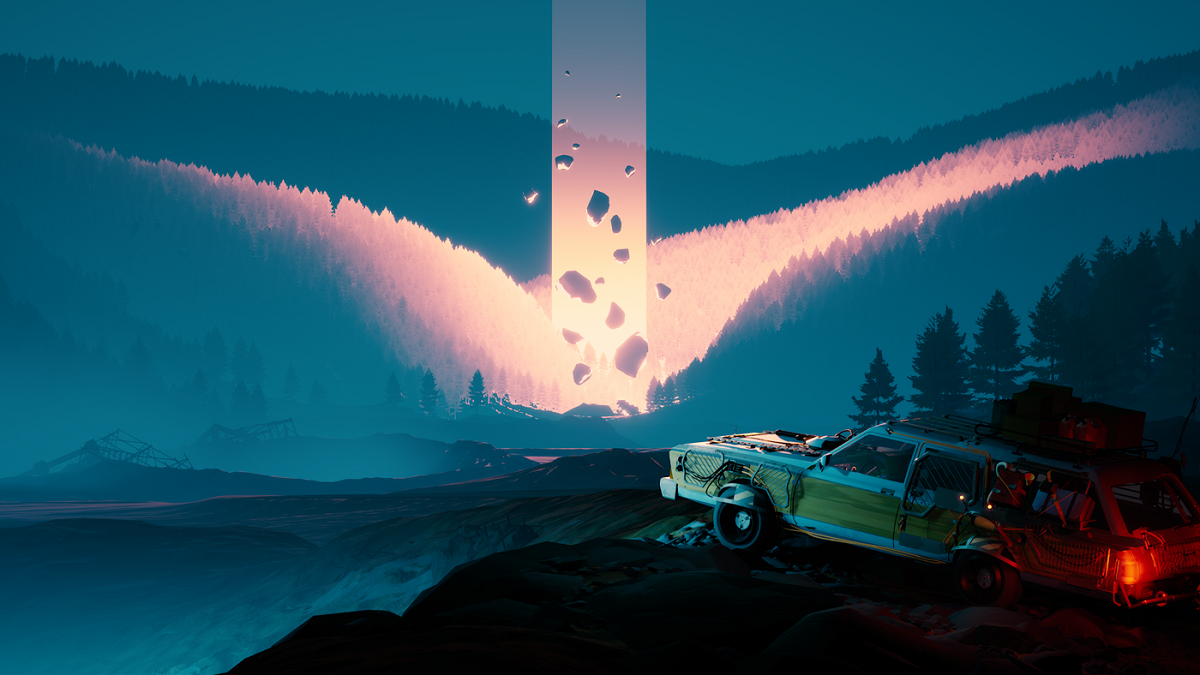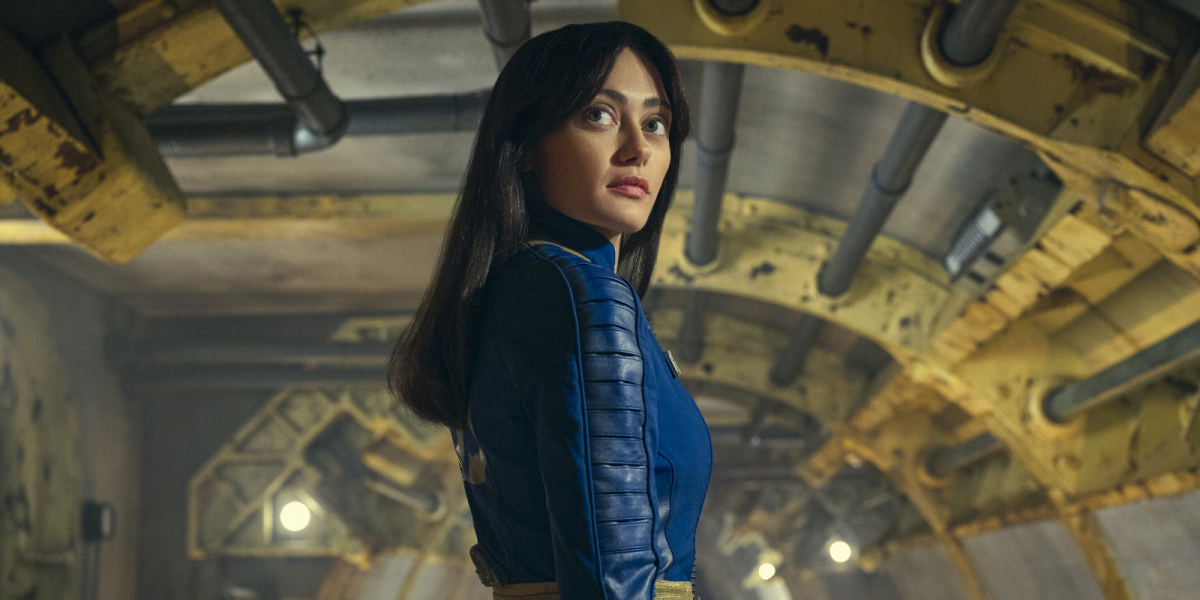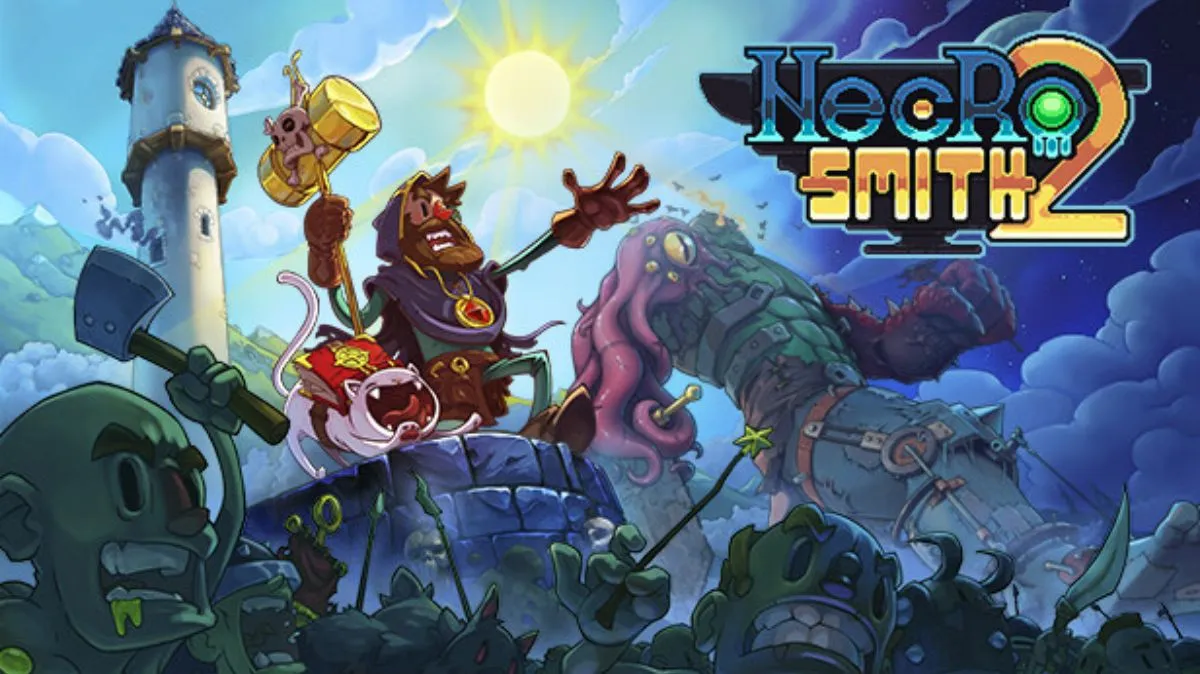Warning: The following review of Pacific Drive review contains spoilers.
Pacific Drive is like a sick, retrofitted old-school station wagon: Its dashboard and gizmos harken to Doc Brown’s DeLorean in Back to the Future, while the outside is a beautiful mess of plated doors, scratched-up side panels, mismatched wheels – all nearing the end of their lifespan.
You replace these weaknesses, prep repair tools in the trunk, and even attach some makeshift gadgets onto the sides or roof to siphon energy from rain or build fuel by bleeding the car’s battery. While you become acclimated as the car’s sole caretaker, you learn to love this station wagon and its flaws. Then, you hate it because it begins to remind you of your own car problems in the real world.
What is that sound? Why does the radio keep changing stations? Man, I just changed this wheel! Jesus, the wipers keep turning on, and my dashboard is flicking. What the hell’s going on now?!
I sound bitter here, but I genuinely loved this about Pacific Drive. Everything is fixable, and the game challenges you with multiple scenarios to keep car maintenance fresh. However, I can’t tell you how much I wished these car quirks weren’t around as the survival game ramped in difficulty. In later zones, this frustrating yet brilliant simulation of car maintenance/driving gains an annoying edge as an onslaught of area-centric Anomalies and weather conditions makes road trips a living hell.
By design, the game is working against you too much when you’re just trying to collect resources to build a new part for your sweet ride or scan new objects to read up on juicy lore. I like how unforgiving and unpredictable the game world can be, but this condition also demands a tight balance that Pacific Drive struggles to maintain toward the latter half.
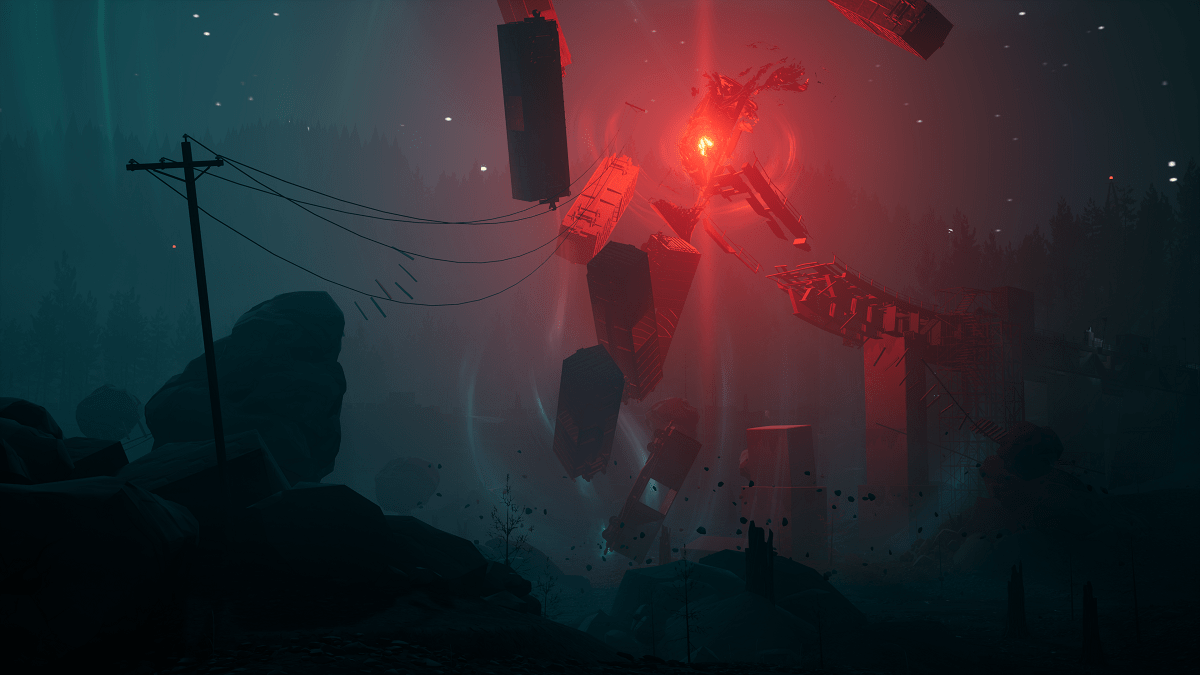
From how you travel to the hostile scenarios you’ll encounter, most of the failings of Pacific Drive stem from the nature of the Olympic Exclusion Zone, the primary setting. The narrative, progression, and sheer atmosphere pull most of the game’s weight.
Pacific Drive follows your explorations inside the Zone – a walled-off region in the Pacific Northwest swarming with unstable supernatural energies – after you get sucked inside.
All you have to traverse its warped landscapes and protect yourself is a car birthed out of this madness, a Remnant tied to you and taking the form of a beat-up station wagon. The researchers studying the Zone’s phenomena inside will help you escape before the Remnant can make you crazy, but it will take drastic measures.
Related: Deathbound Turns Soulslike Combat Into Rhythmic Party-Swapping, and I’m Hooked [Preview]
Frankly, the narrative sets the stage for Pacific Drive more than being a pillar you must actively engage with since you could skip specific conversations that fill in the Zone’s history. With that said, I couldn’t help but swoon over the characters and their charming quips whenever they spoke.
Their raw feelings trickled through voice cracks and heated lines, going to ranges I didn’t anticipate as stakes rose to a feverish high. Investing in the lore and characters has a payoff that tugs at your heart and makes driving deep into the Zone all the more worthwhile to resolve the unknown. Along the same lines, the progression is also a crucial motivator.
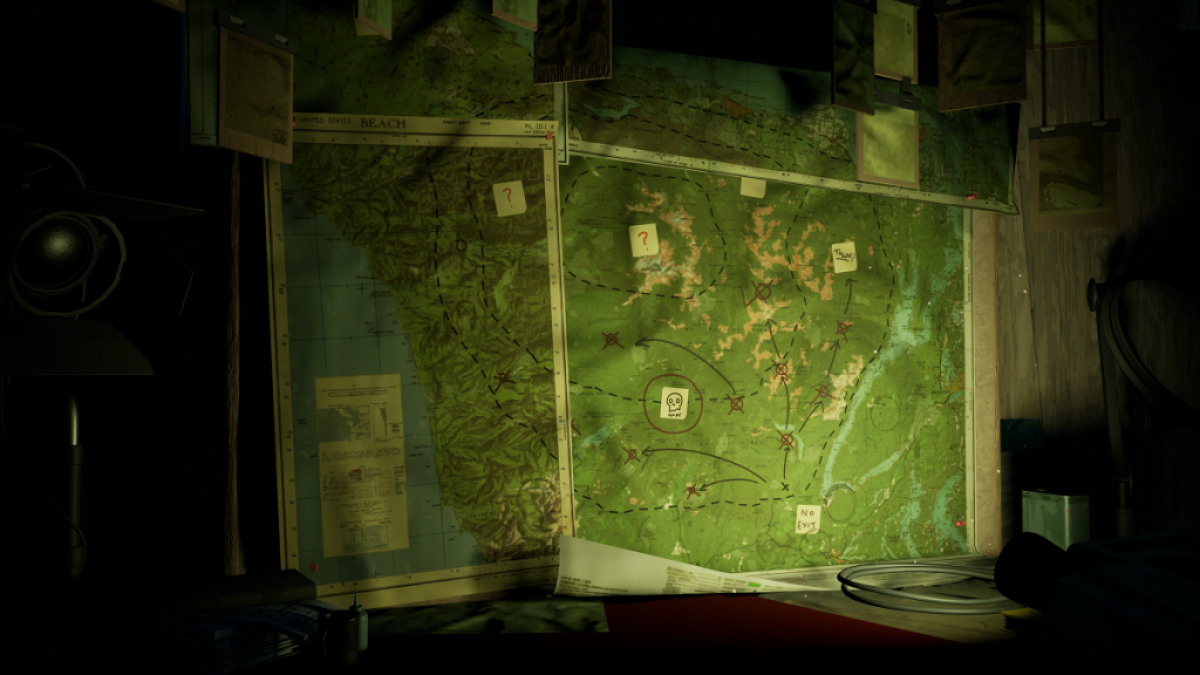
A garage near the edge of the Zone will be your base of operations. Here, you can use a Fabrication Station to unlock blueprints for engines and doors with specific stats, figure out what issues your car suffers from a diagnostics system, swap between tools for repairs, and more.
Think of this as a prepping stage before you select a destination you want to reach from a map, which shows the routes you need to take and details on supernatural weather conditions or threats you might have to avoid.
Those threats appear as Anomalies, like bouncing electrical balls that can latch onto and damage your car or ghost-like floating entities that steal car parts if you drive too close. A ring of mist and electricity will force you off asphalt roads for safer dirt paths; weather conditions turn swamp waters poisonous with radiation, sapping your fuel and health bar.
As you deal with these obstacles, the pressure to scavenge inside abandoned buildings for resources will be at the front of your mind, taking you left to right before the storm arises. This phenomenon can kill you if you stick around too long, so gameplay usually boils down to deciding whether to push forward to your destination or summon a portal by collecting objects over a map to warp back to base.
Together, these parts – customization/prep, zone selection, and driving/scavenging – are the focal framework for Pacific Drive and felt absurdly strong in the first half. The Zone’s mysteries permeate various gameplay systems, calling on you to scan Anomalies to figure out what they do and understand the nuances of tools/car parts for weathering the elements. As the gears slide into place, choosing what upgrades to get first promotes tackling the game however you see fit and being rewarded for being resourceful and a forward-thinker.
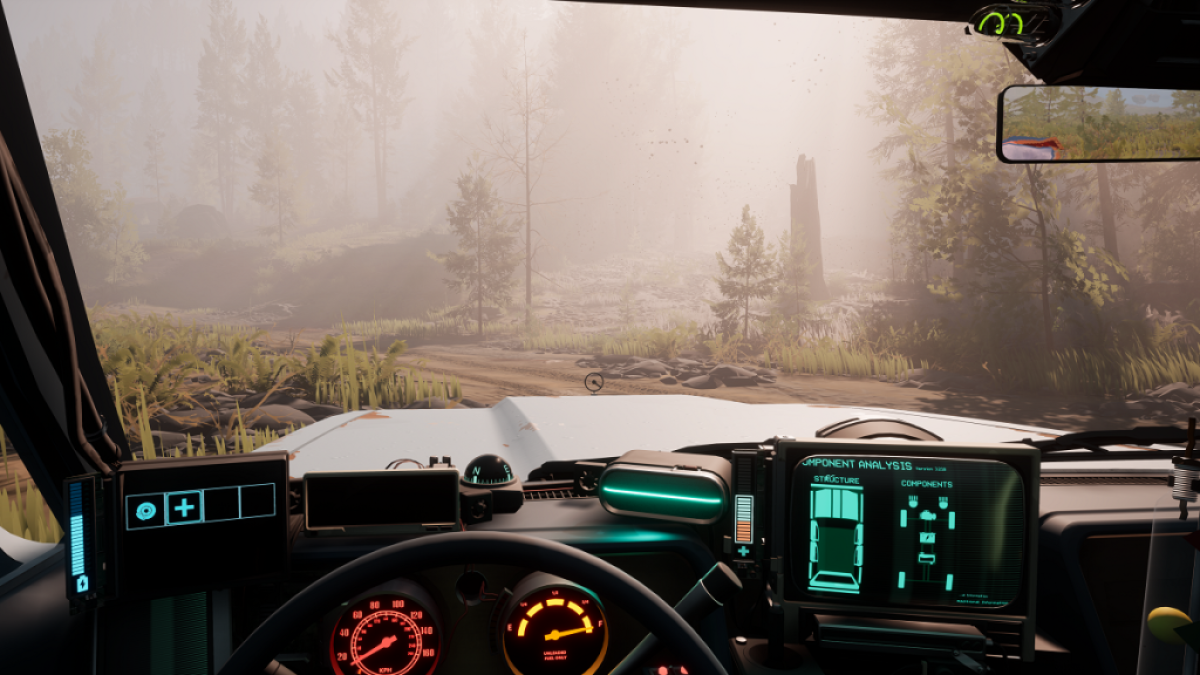
Pacific Drive thrives in this nicely paced second or third gear, building momentum but not pushing forward so fast. However, the pacing ultimately changes: You’re in an uncomfortable fourth gear with difficulty spikes that unknowingly get in the way of the experience.
Gathering biome-exclusive resources you desperately need for upgrades becomes almost impossible if you get an unlucky blend of weather conditions. Anomalies are everywhere, too much everywhere at times, and discourages doing maintenance while on the road. And if you traded a car skill part that you need to thwart an Anomaly to try something else, you’re punished for it, forcing you back to what you’ve been using most of the game.
Overwhelming defines most of the latter experience. I appreciate that the devs added setting adjustments to tweak the systems in Pacific Drive; however, most players will want to play this intended experience, which is, unfortunately, half engrossing and half unbalanced.
You’re asked to solve issues and improve possessions with cleverly intentional mechanics, but even these become frustrating to find joy in as exploration failings bleed into them. If not for the spikes and awkward pacing shift, Pacific Drive would have knocked it out of the park until the end.
Pacific Drive will be available on PlayStation and PC.

